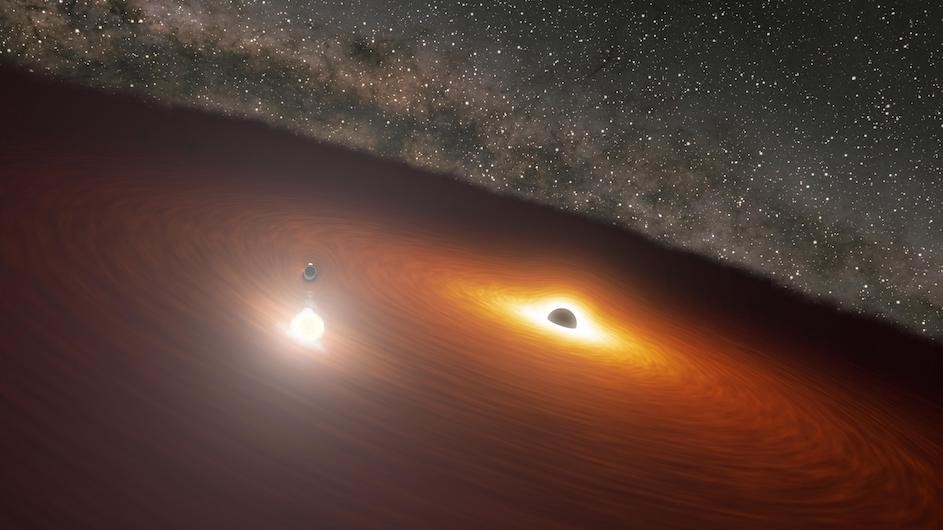Black Hole at Galaxy’s Center Is Much Smaller Than Previously Thought
Two new papers offer striking and surprising insights into the often-studied galaxy OJ 287.

The distant galaxy OJ 287 has proved a compelling and fruitful object of study for scientists since the late 19th century, when astronomers at Harvard first noticed its existence.
Now, research in two new papers published this week, one of which is co-authored by Columbia Astronomy and Physics Professor Zoltán Haiman, suggests that previous models of the contents of OJ 287 were likely wrong, and that the larger of two black holes at the galaxy’s center is about 100 times smaller than previously thought.
OJ 287 has emitted outbursts of light and energy that offer a sense of what’s inside it since scientists first observed the galaxy around 130 years ago. OJ 287 is a blazar—a galaxy with a giant black hole at its center. It produces a narrow, powerful jet of energy and light that happens to be pointed in the direction of earth and visible in various frequencies, making it easy for scientists to observe. The galaxy is a bit like the Old Faithful of the outer cosmos, reliably putting on a show the shape and sound of which offer data and insights into the galaxy's inner contents.
OJ 287’s periodic emissions—which happen roughly every 12 years— have puzzled astrophysicists for decades. The most likely explanation for them is that the center of OJ 287 contains two massive black holes, rolling around each other, causing an outburst each time the smaller black hole pierces a disk of gas swirling around the more massive one. The existence of close pairs of massive black holes in galaxy centers has long been assumed, but current telescopes do not have sufficient resolution to detect them. The periodic outbursts from OJ 287 are widely regarded as the best indirect evidence for such a pair of black holes, which are known as a “binary” black hole.
The papers conclude that a black hole that is 100 million solar masses is likely at the galaxy’s center. That finding contradicts the existing leading model for the galaxy, which hypothesized that a black hole that weighed a far heftier 10 billion solar masses was at the galaxy’s center. The research was led by Stefanie Komossa of the Max Planck Institute for Radio Astronomy in Bonn. The team behind the papers conducted the most extensive direct observations of the galaxy’s emissions that have been undertaken to-date.
The findings address a mystery that emerged several years ago, when scientists predicted a major outburst of activity from OJ 287 that never came. Since then, astronomers have struggled to understand why that prediction was incorrect. The new estimate of the black hole mass addresses that question.
“The previous huge mass for OJ 287’s central black hole was based on the timing and properties of its outbursts, and was uncomfortably large, given our understanding of black hole growth in galaxies. The new data indicates a much more comfortable black hole mass,” Haiman said. “Better understanding what’s inside OJ 287 will offer keys to understanding not just this galaxy, but galaxy mergers producing pairs of black holes, as well as other extreme astrophysical environments.”
The paper that Haiman co-authored was published in Monthly Notices of the Royal Astronomical Society Letters. The other paper on the new research findings was published in the Astrophysical Journal.
Read more on the findings on the Max Planck Institute for Radio Astronomy’s website.